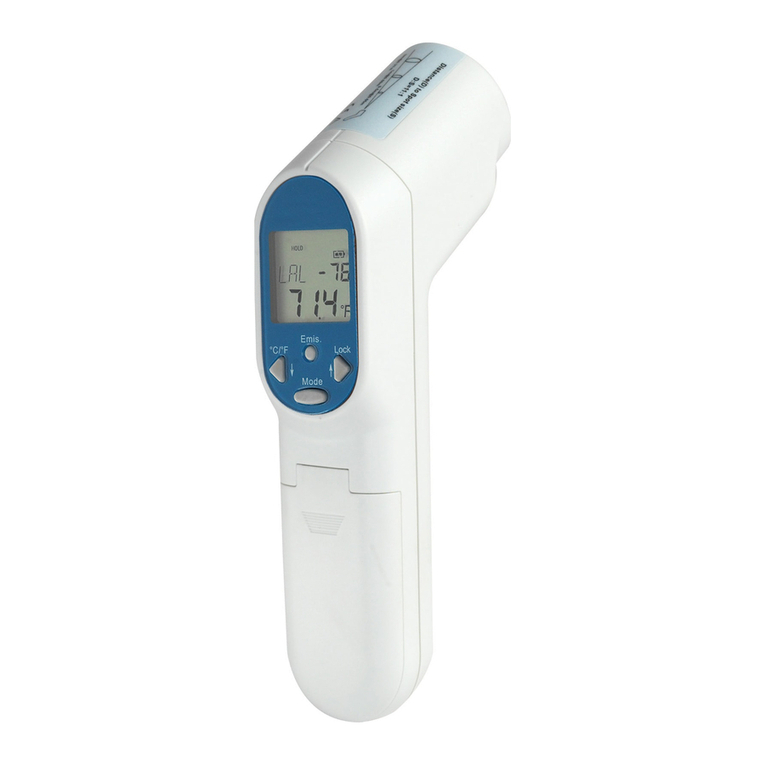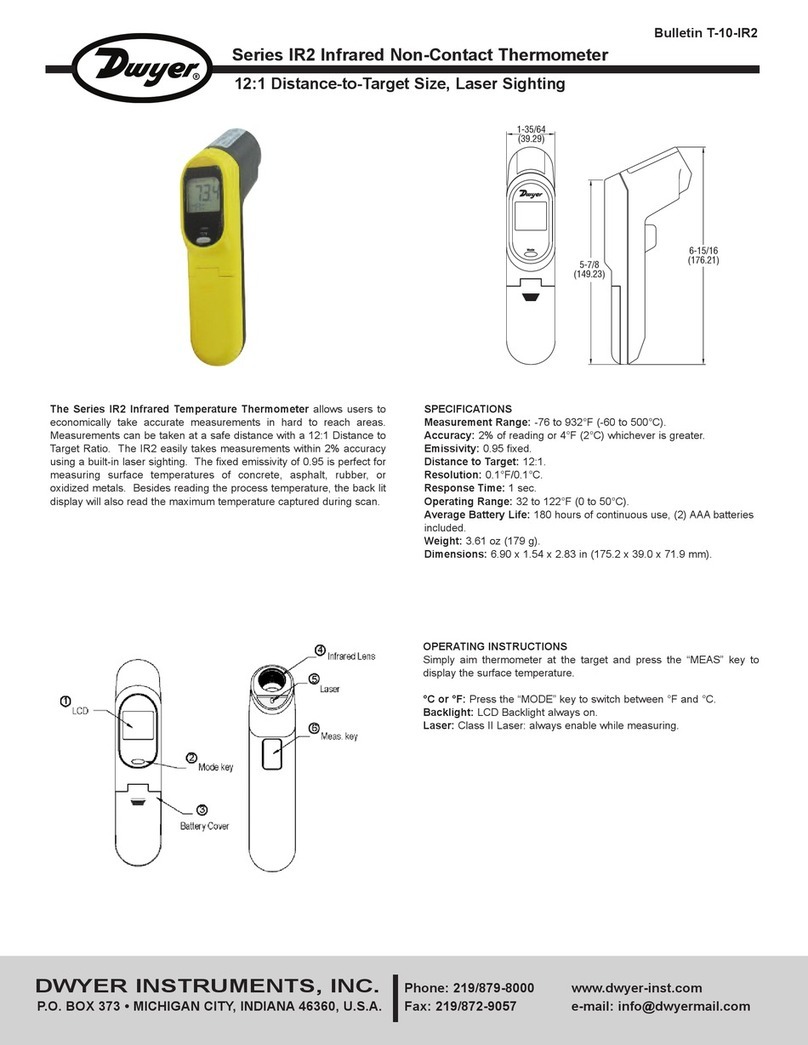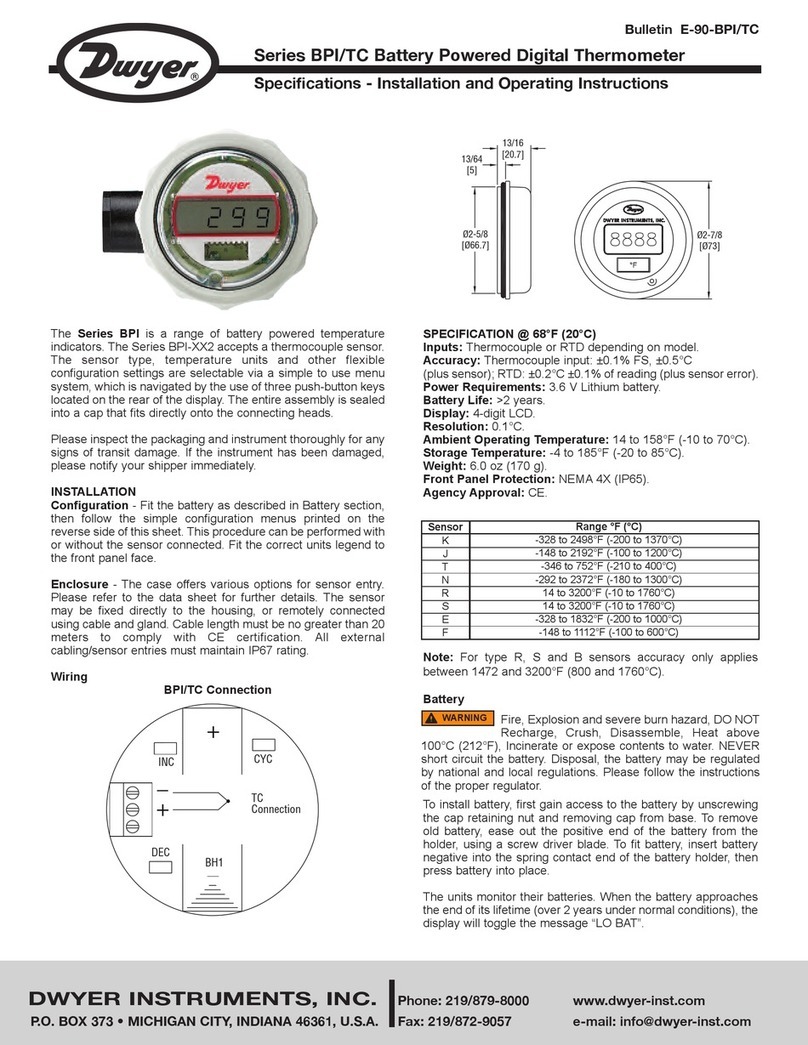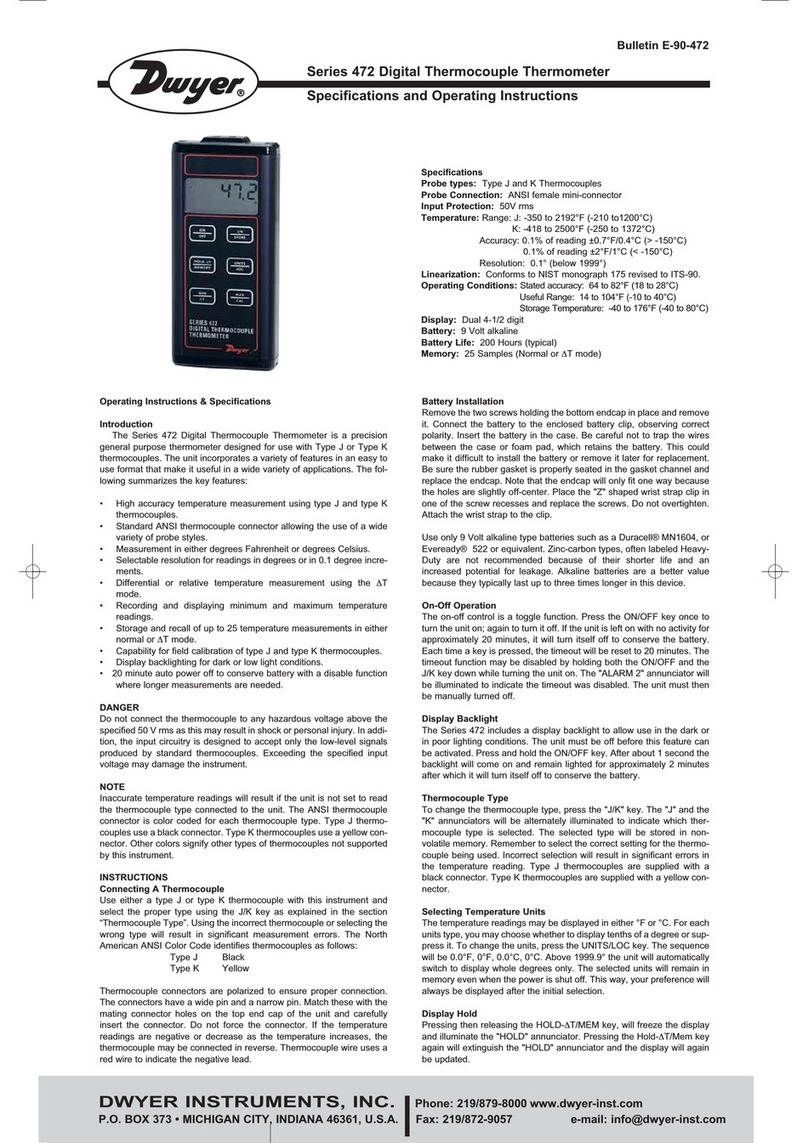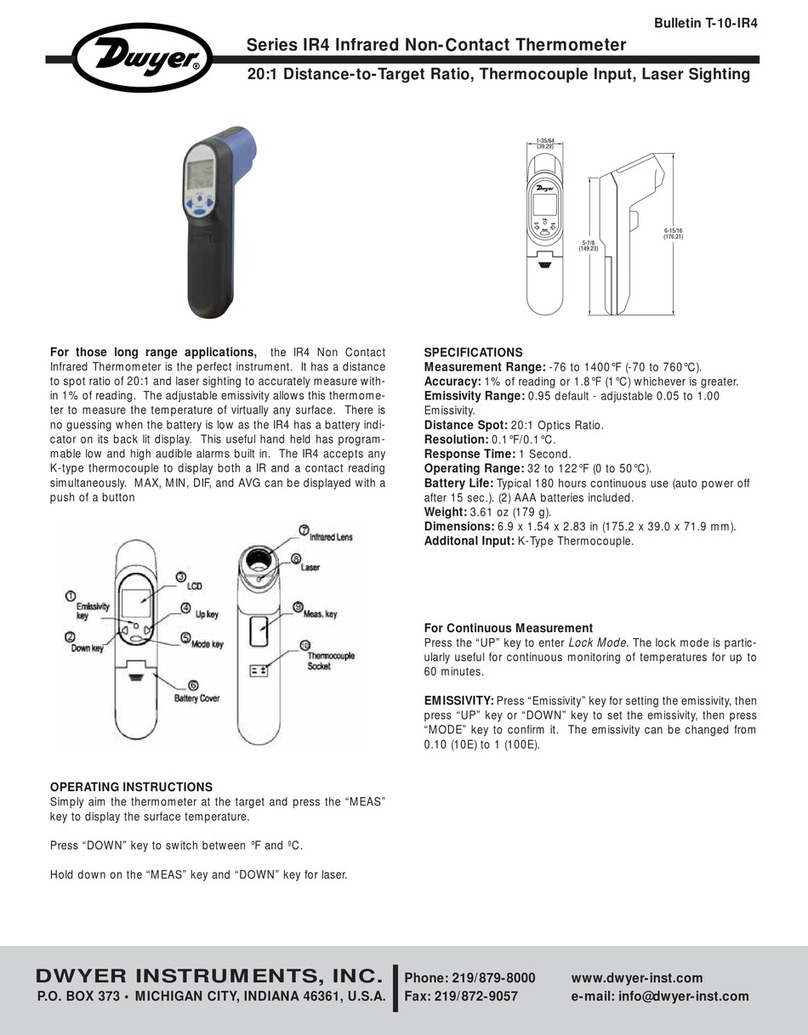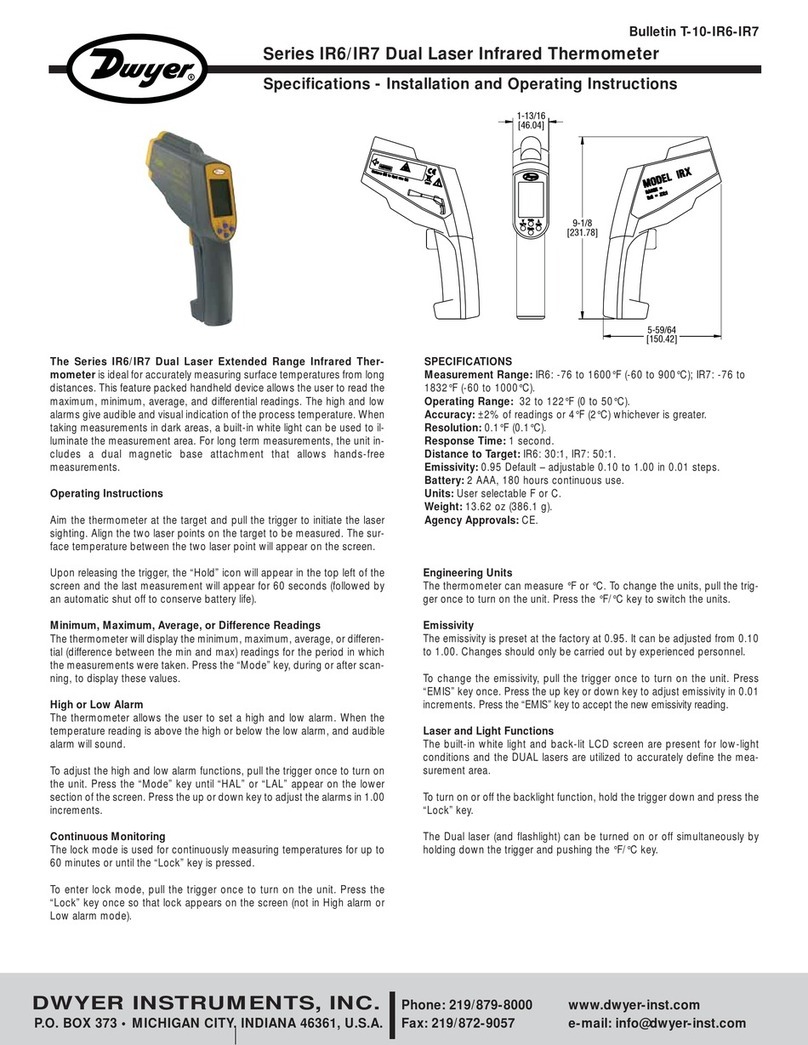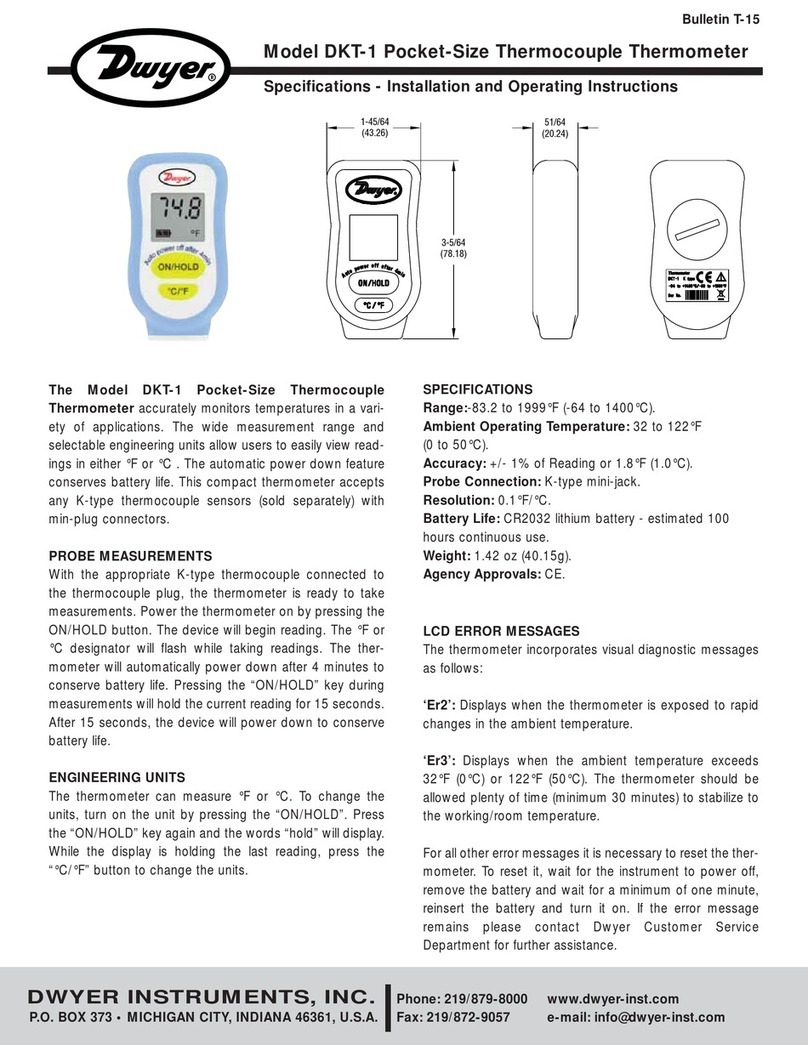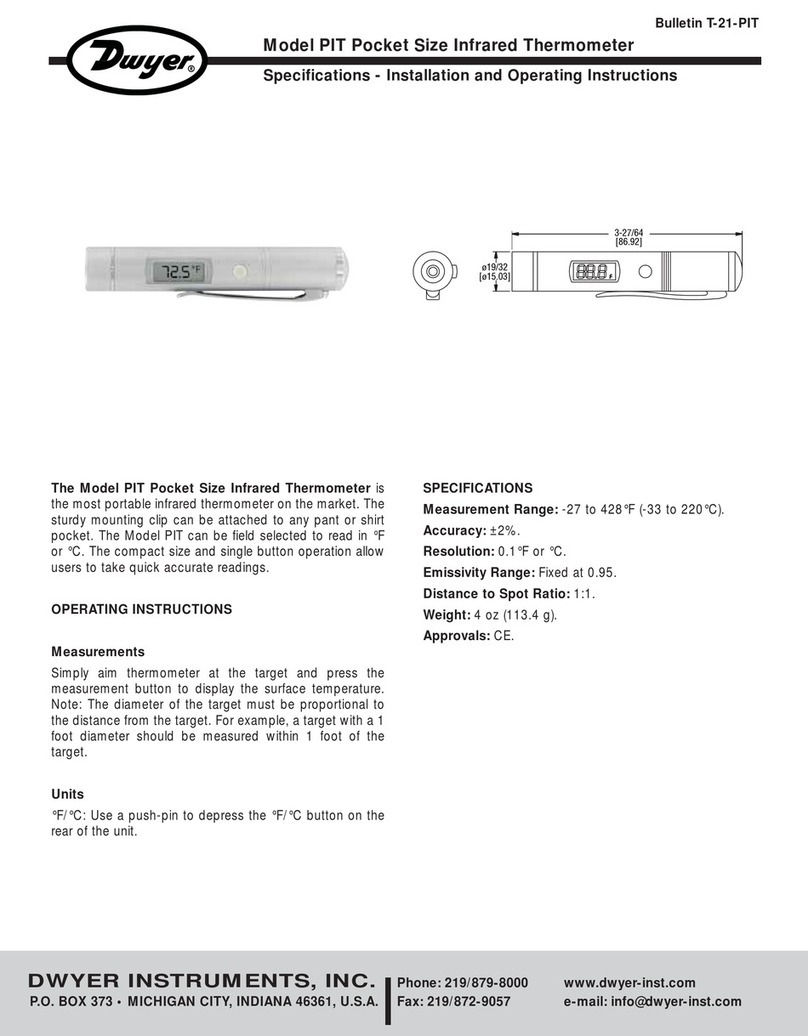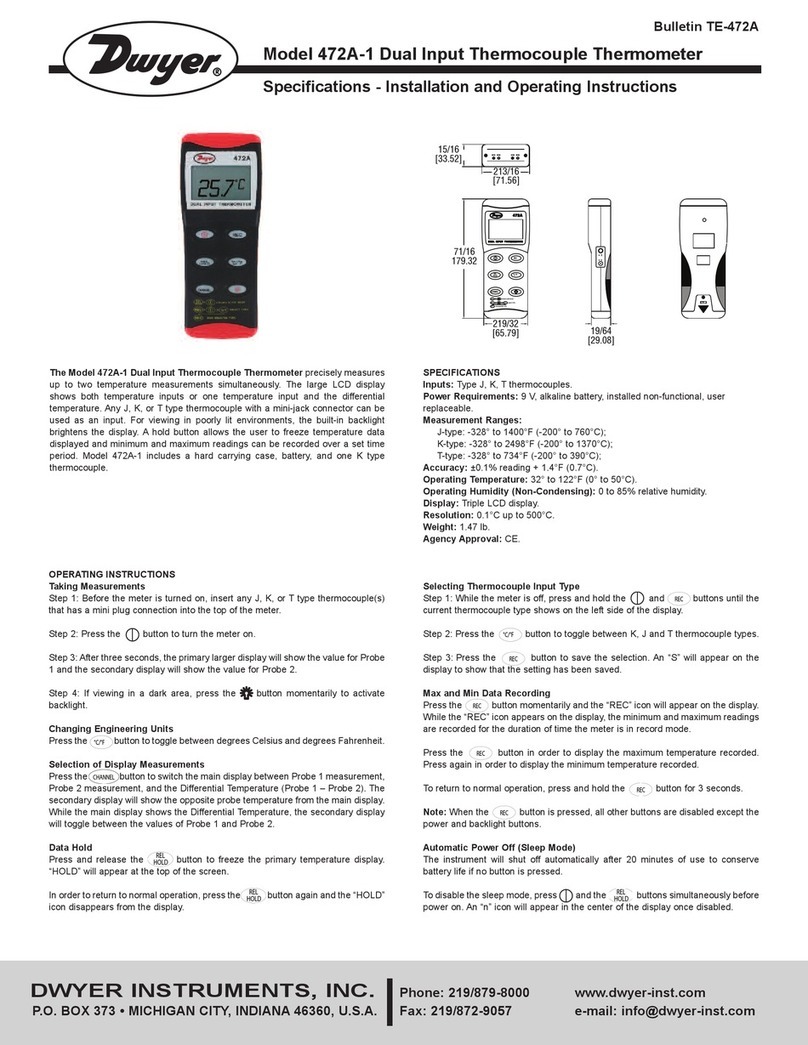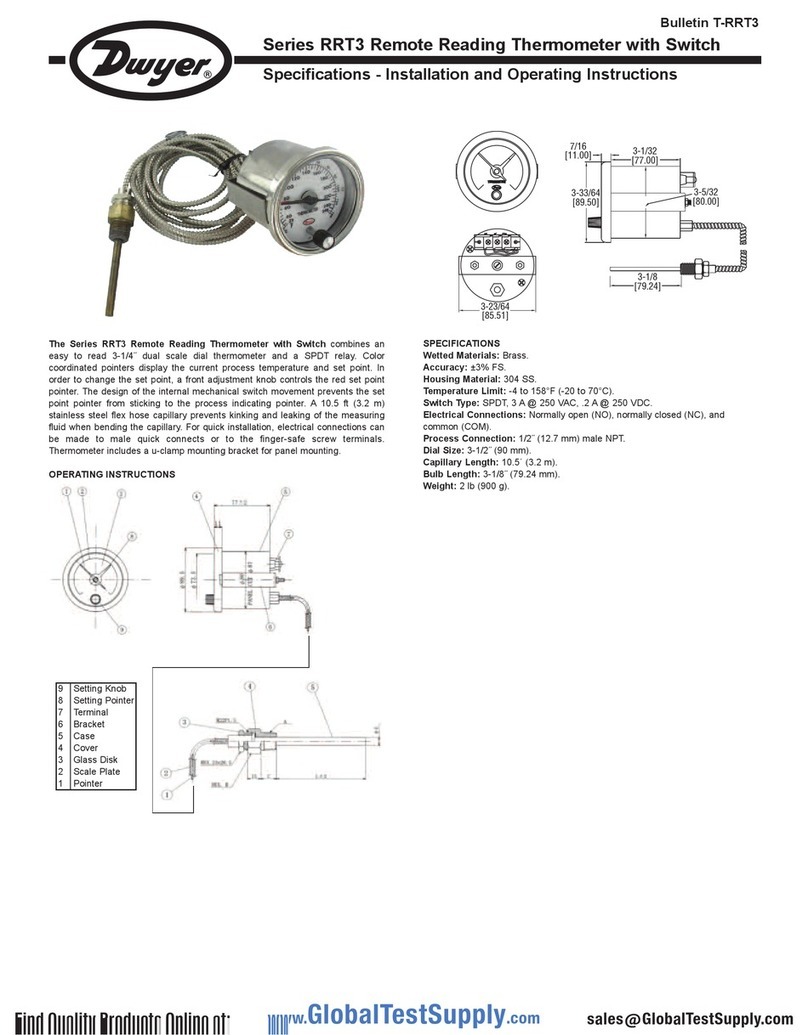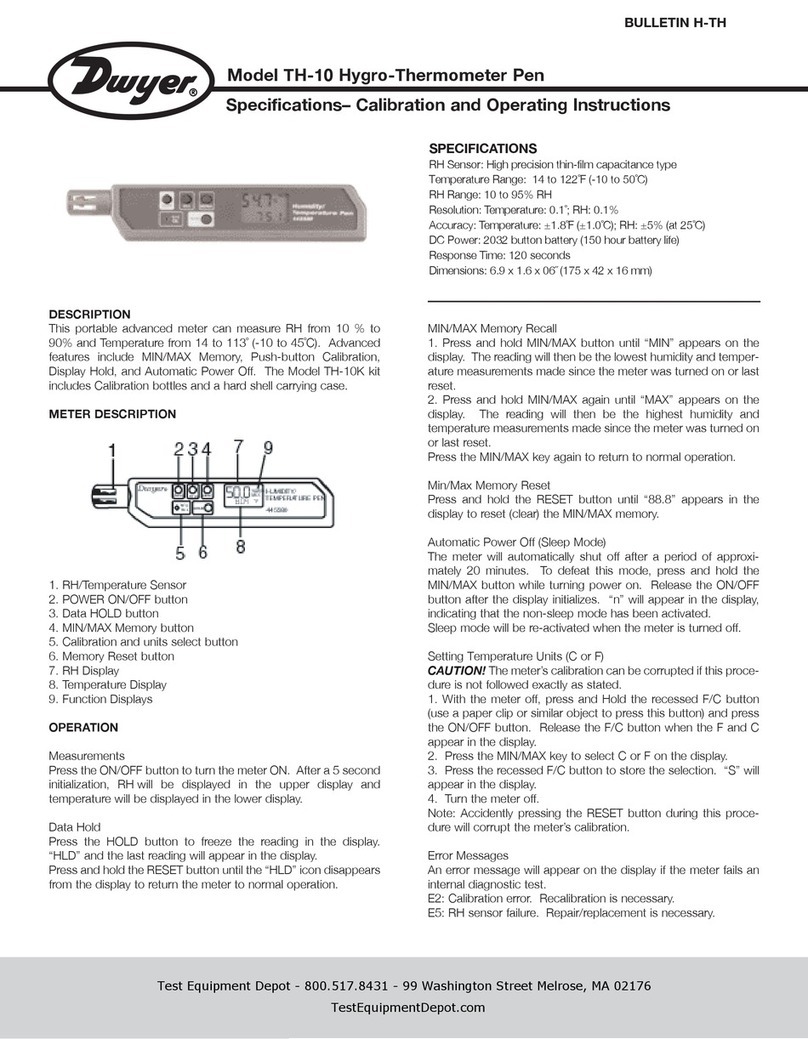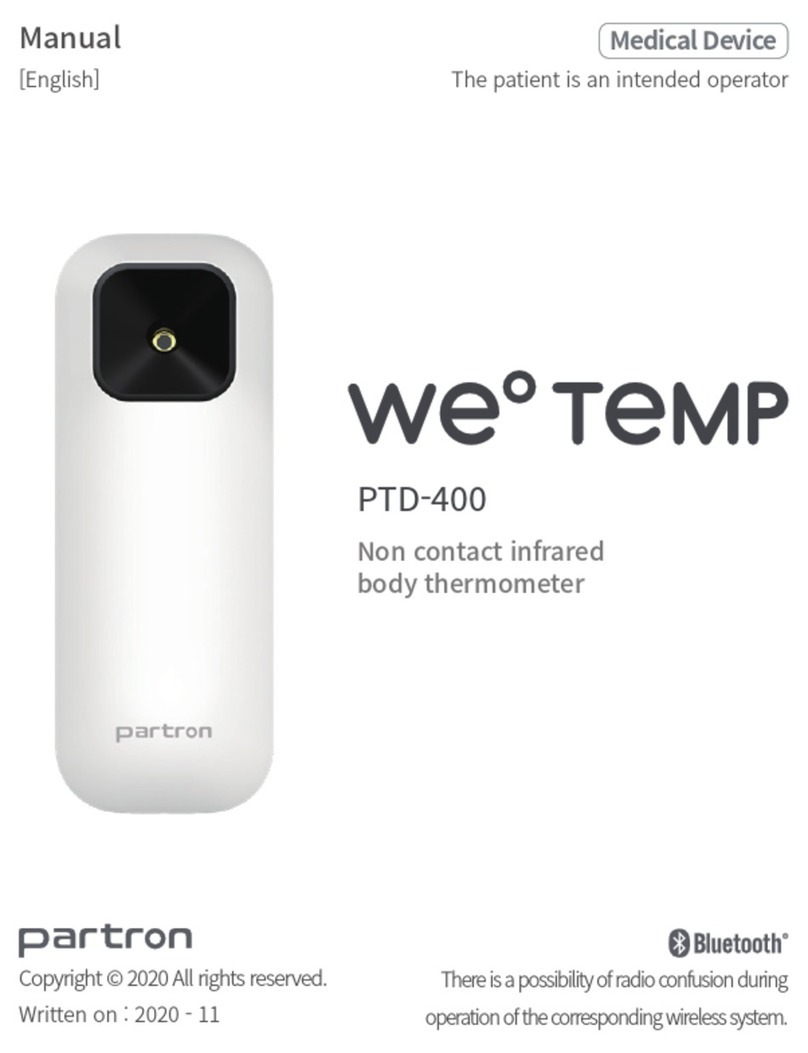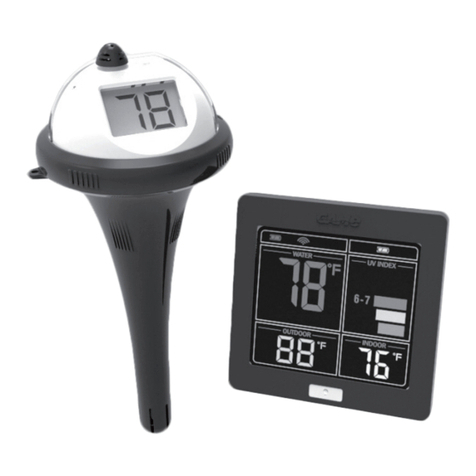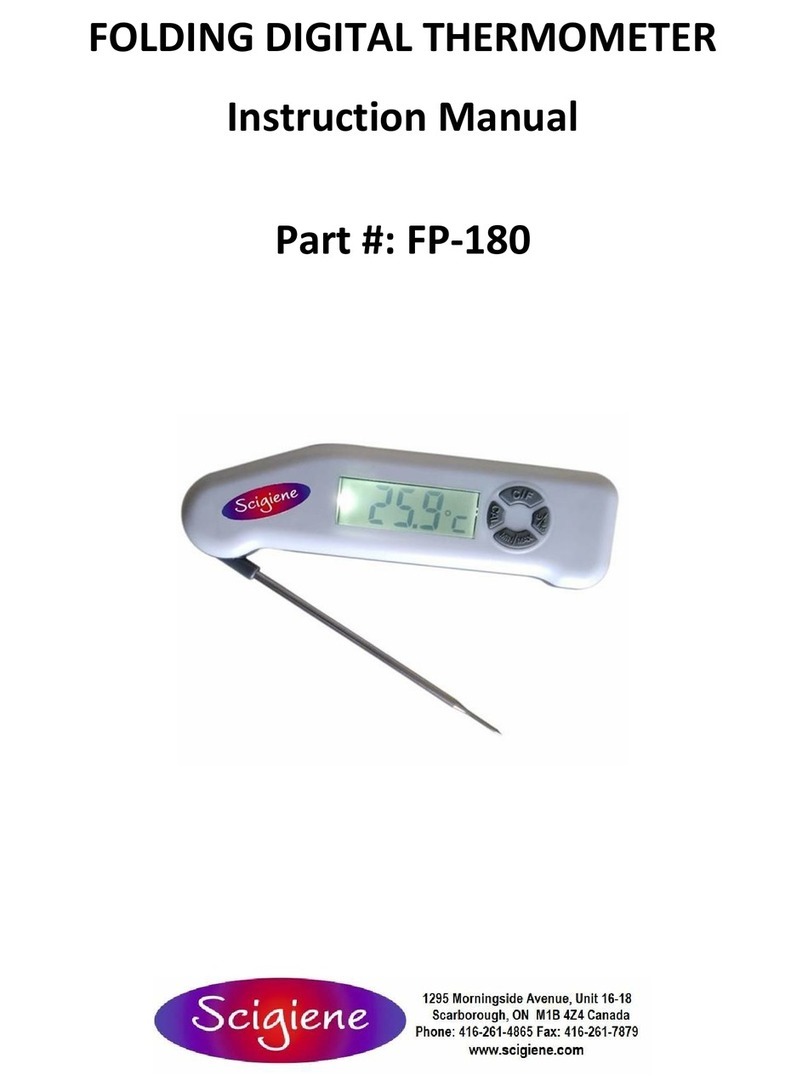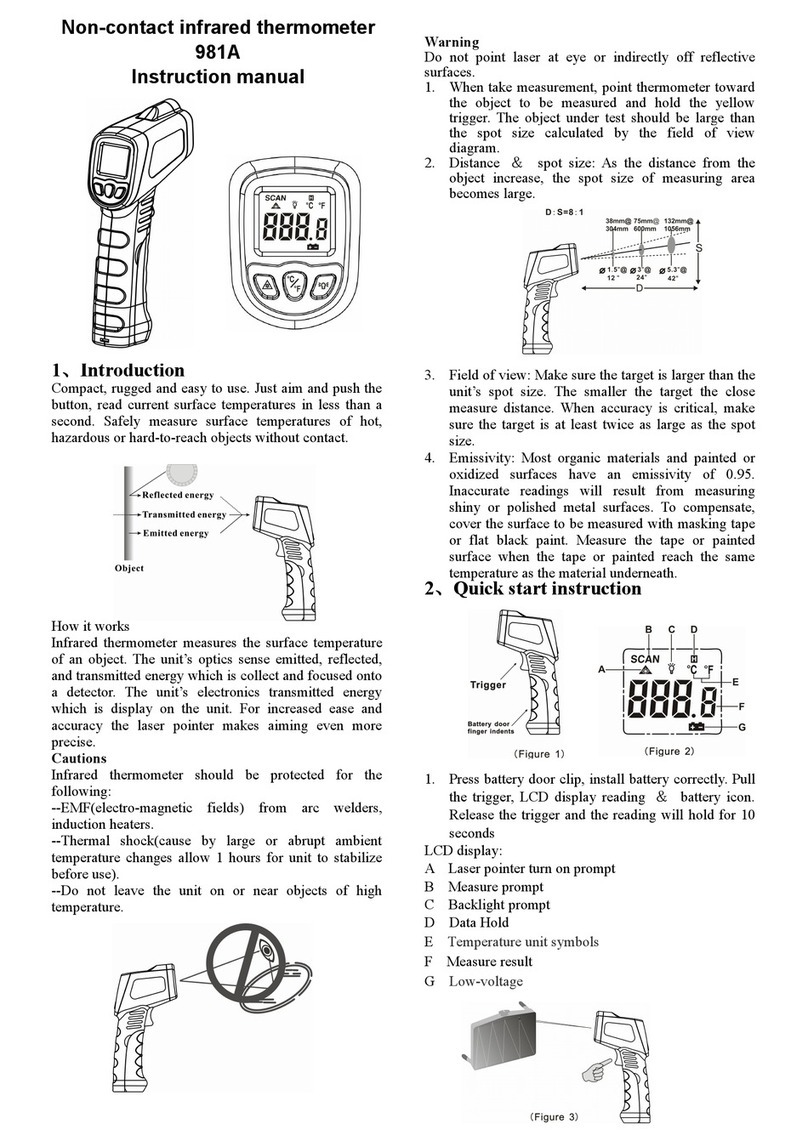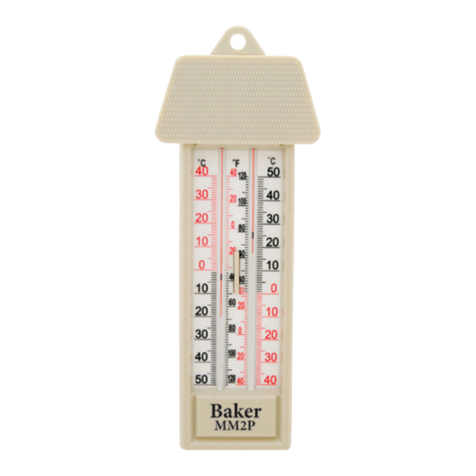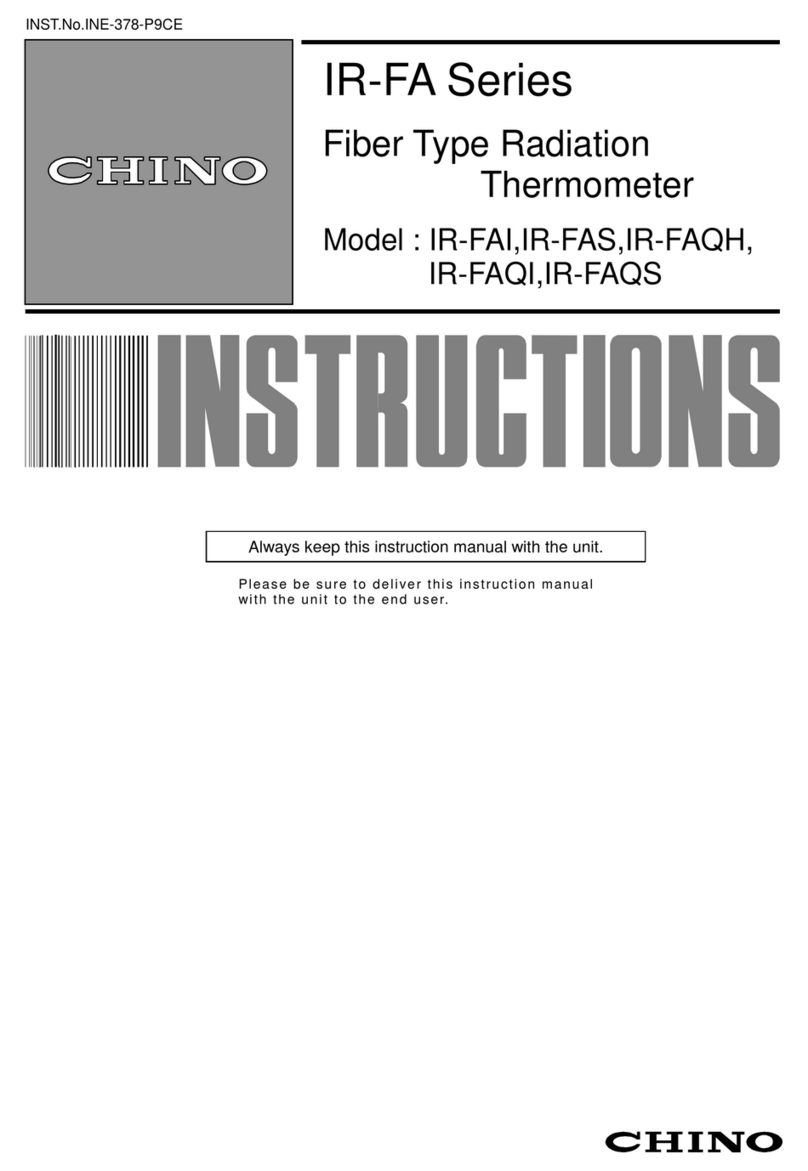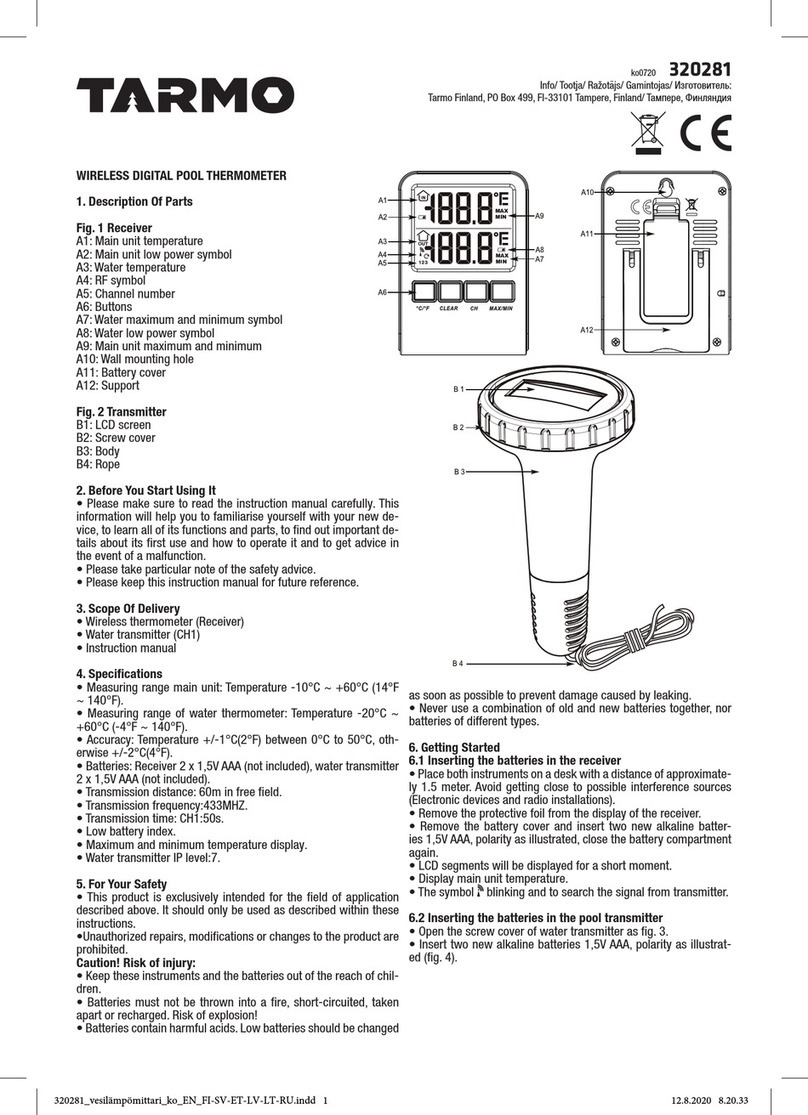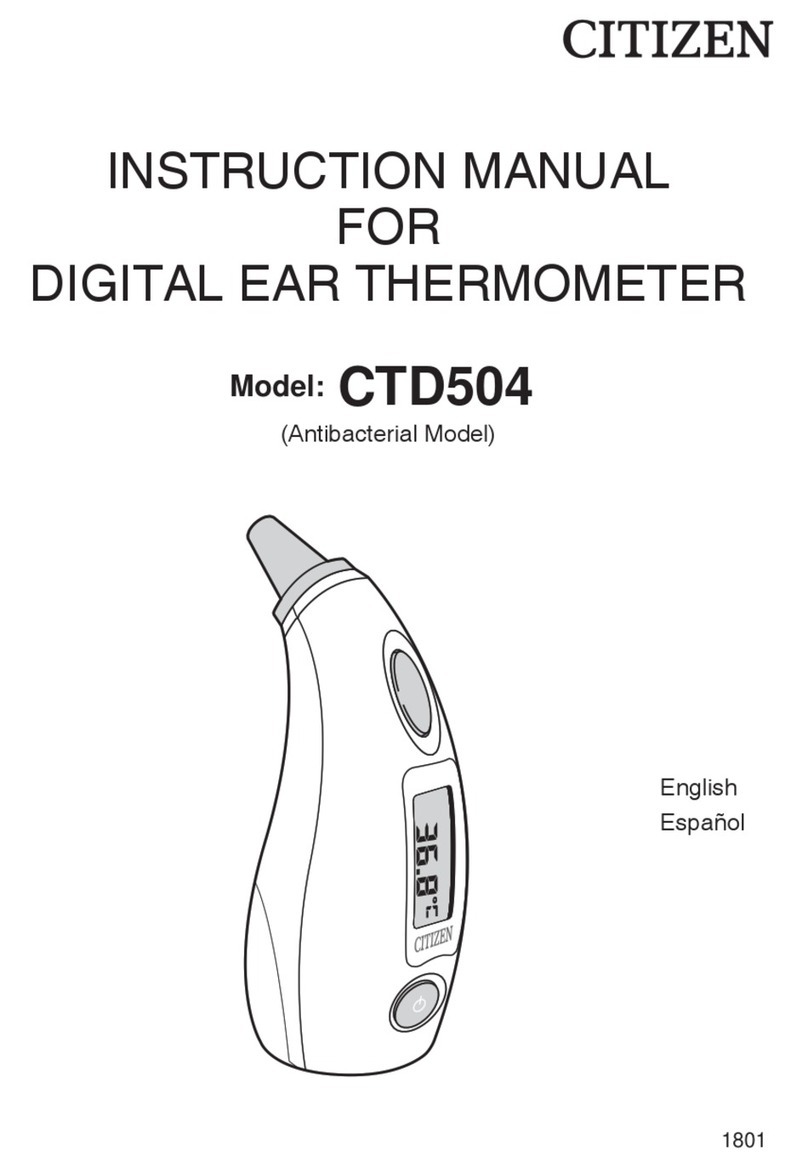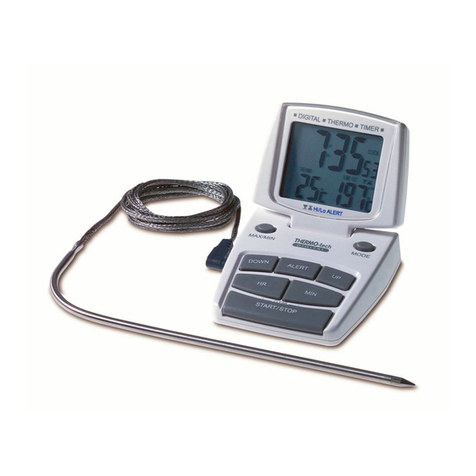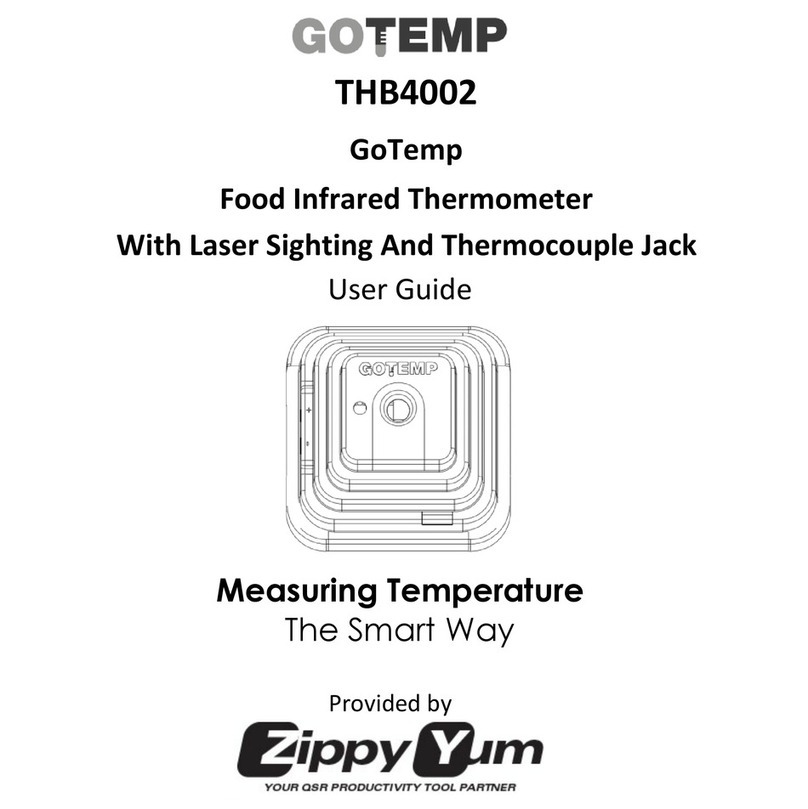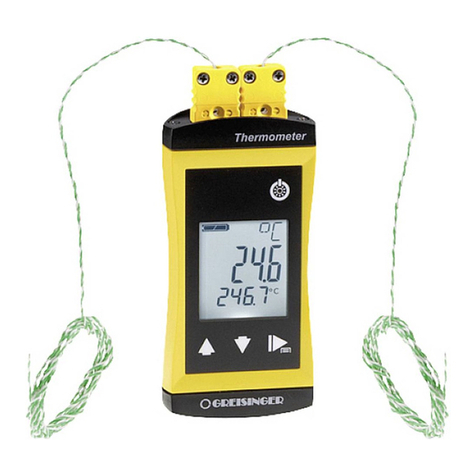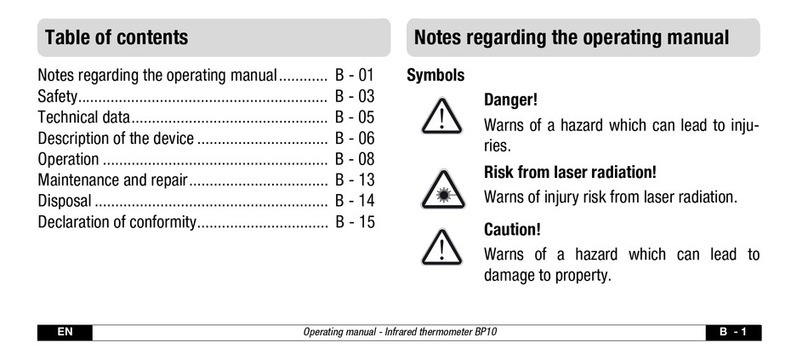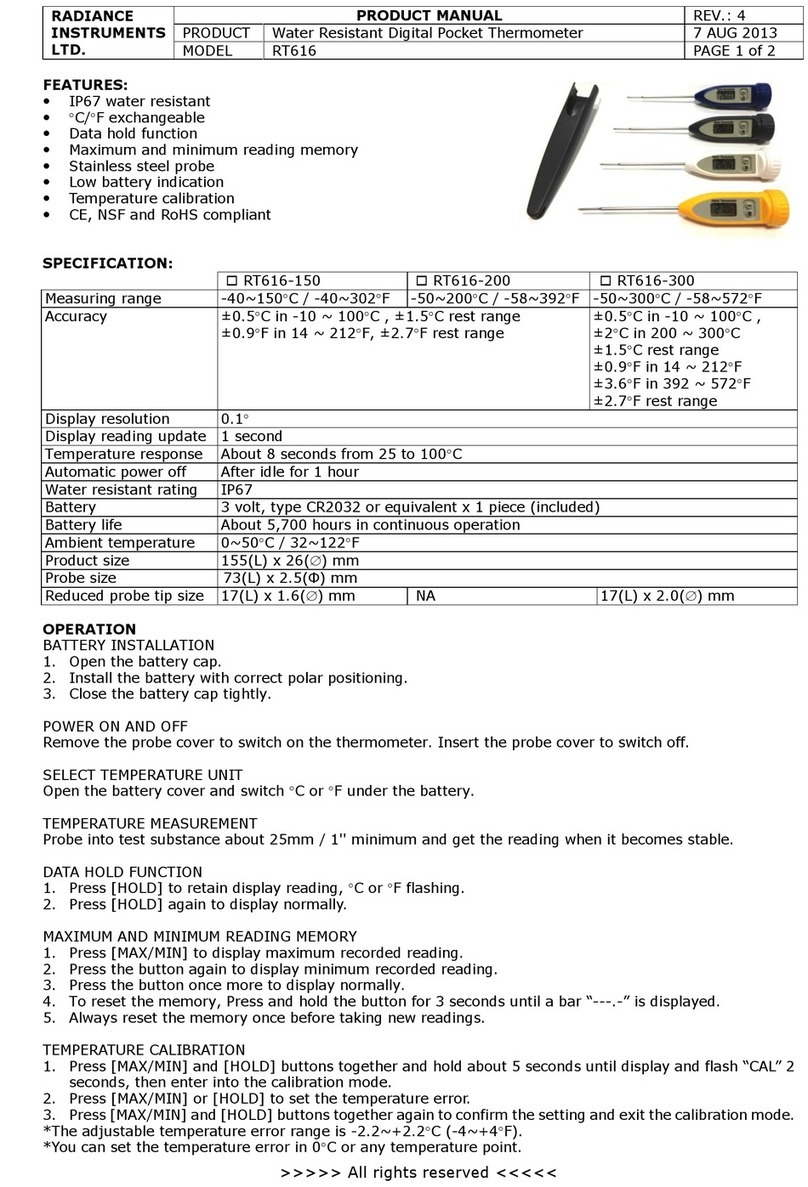
LCD Error Messages
The thermometer incorporates visual diagnostic messages as follows.
Hi Lo:Hi or Lo is displayed when the temperature being measured is
outside of the settings of HAL and LAL.
Er2: Displays when the thermometer is exposed to rapid changes in the
ambient temperature.
Er3: Displays when the ambient temperature exceeds 32°F (0°C) or
122°F (50°C). The thermometer should be allowed plenty of time (minimum
30 minutes) to stabilize to the working/room temperature.
For all other error messages it is necessary to reset the thermometer. To
reset it, wait for the instrument to turn off, remove the battery and wait for
a minimum of one minute, reinsert the battery and turn it on. If the error
message remains please contact the Dwyer Customer Service department
for further assistance.
Batteries
The thermometer incorporates visual low battery indication as follows.
Battery OK: Measurements are possible.
Battery Low: Battery needs to be replaced, measurements are still
possible.
Battery Exhausted: measurements are not possible.
When the low battery icon indicates the battery is low, the batteries should
be replaced immediately with AAA, 1.5V batteries using the following
steps.
Replacing Batteries
1. Remove the rubber screw cover and screw from the battery cover.
2. Lift the battery cover to access batteries.
3. Replace batteries observing polarity marked on unit.
4. Close the battery cover.
5. Replace screw and rubber screw cover.
It is important to turn the thermometer off before replacing the battery
otherwise the thermometer may malfunction. Dispose of used battery
promptly and keep away from children.
1. When device is in use, do not look directly into the laser
beam - Permanent eye damage may result.
2. Use extreme caution when operating the laser.
3. Never point the device towards anyone’s eyes.
4. Keep out of reach of all children.
The readings may be affected if the unit is operated within radio frequency
electromagnetic field strengths of approximately 3 volts per meter, but the
performance of the instrument will not be permanently affected.
1. Do not twist / rotate the probe in the wrong direction.
2. Excess stress may cause the probe to break.
3. Following a high temperature measurement, the probe
may be hot.
4. The probe may cause harm / injury when open. Keep
probe back when not in use.
5. To prevent damage to the probe, do not exceed the
measurement temperature range.
6. To avoid electrical shock, do not use this instrument
when voltages at the measurement surface exceed 24V
AC or DC.
Storage and Cleaning
The sensor lens is the most delicate part of the thermometer. The lens
should be kept clean at all times, care should be taken when cleaning the
lens using only a soft cloth or cotton swab with water or medical alcohol.
Allowing the lens to fully dry before using the thermometer. Do not
submerge any part of the thermometer. The thermometer should be stored
at room temperature between -4 and 149°F (-20 to 65°C).
MAINTENANCE
A periodic check of the system calibration is recommended. The Model
FST-300 is not field serviceable and should be returned if repair is needed
(field repair should not be attempted and may void warranty). Be sure to
include a brief description of the problem plus any relevant application
notes. Contact customer service to receive a return goods authorization
number before shipping.
©Copyright 2008 Dwyer Instruments, Inc. Printed in U.S.A. 11/08 FR# R5-443627-00 Rev. 1
Probe Infrared Lens
White Light
Battery Cover
Rubber Screw Cover
(Screw’s location)
DWYER INSTRUMENTS, INC.
Phone: 219/879-8000 www.dwyer-inst.com
P.O. BOX 373 • MICHIGAN CITY, INDIANA 46361, U.S.A. Fax: 219/872-9057 e-mail: info@dwyer-inst.com
NOTICE
NOTICE
T-16:TEMPLATE 11/25/08 2:07 PM Page 2
